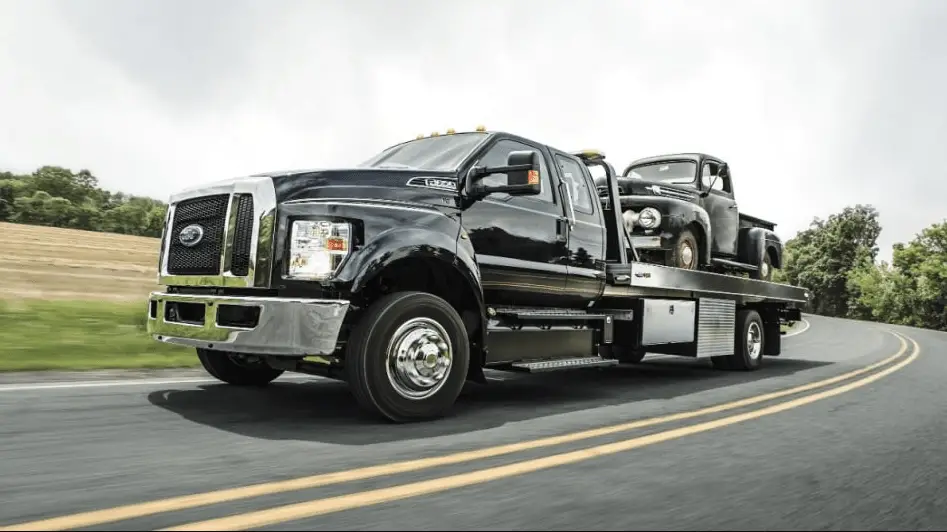
2025 FORD F-650 Driving Aids Sensor Owner’s Manual
When it comes to safety and convenience in the world of automotive technology, the 2025 Ford F-650 stands out thanks to its array of state-of-the-art driving aid sensors that are intended to improve driving and reduce potential hazards on the road. With features like adaptive cruise control and lane departure warning systems, these cutting-edge sensors act as watchful sentinels, continuously observing the environment around the car and giving the driver immediate input to encourage safer and more assured travels.
2024 Ford Maverick Specs, Price, Features, Mileage and Review
FORD Driving Aids
DRIVER ALERT (IF EQUIPPED)
WARNING: You are responsible for controlling your vehicle at all times. The system is designed to be an aid and does not relieve you of your responsibility to drive with due care and attention. Failure to follow this instruction could result in the loss of control of your vehicle, personal injury or death.
WARNING: The system may not function if the sensor is blocked.
WARNING: Take regular rest breaks if you feel tired. Do not wait for the system to warn you.
WARNING: Certain driving styles may result in the system warning you even if you are not feeling tired.
WARNING: In cold and severe weather conditions the system may not function. Rain, snow and spray can all limit sensor performance.
WARNING: The system will not operate if the sensor cannot track the road lane markings.
WARNING: If damage occurs in the immediate area surrounding the sensor, have your vehicle checked as soon as possible.
WARNING: The system may not correctly operate if your vehicle is fitted with a suspension kit not approved by us.
Note: Keep the windshield free from obstructions. For example, bird droppings, insects and snow or ice.
Note: If the camera is blocked or if the windshield is damaged, the system may not function.
Note: The system remembers the last setting when you start your vehicle, unless it detects a MyKey™.
Note: If enabled in the menu, the system activates at speeds above 40 mph (64 km/h).
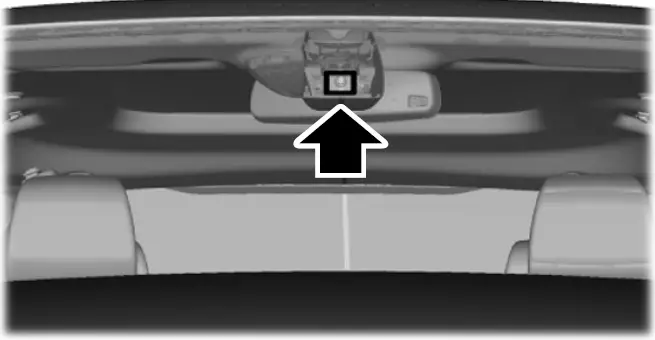
The system monitors your driving behavior using various inputs including the front camera sensor. If the system detects reduced driving alertness below a certain threshold, the system alerts you using a tone and a message in the information display.
Using Driver Alert
Switching the system on and off
You may switch the system on or off through the information display by selecting Settings, Driver Assist and then Driver Alert in the menu. When activated, the system monitors your alertness level based upon your driving behavior in relation to the lane markings, and other factors.
System Warnings
Note: The system does not issue warnings below approximately 40 mph (64 km/h).
The warning system uses two stages. At first the system issues a temporary warning that you need to take a rest. This message only appears for a short time. If the system detects further reduction in driving alertness, another warning could be issued which remains in the information display for a longer time. Press OK on the steering wheel control to clear the warning. When active the system runs in the background and only issues a warning if required.
Resetting the System
You can reset the system by either:
- Switching the ignition off and on.
- Stopping the vehicle and then opening and closing the driver door.
LANE KEEPING SYSTEM (IF EQUIPPED)
WARNING: You are responsible for controlling your vehicle at all times. The system is designed to be an aid and does not relieve you of your responsibility to drive with due care and attention. Failure to follow this instruction could result in the loss of control of your vehicle, personal injury or death.
WARNING: Always drive with due care and attention when using and operating the controls and features on your vehicle.
WARNING: In cold and severe weather conditions the system may not function. Rain, snow and spray can all limit sensor performance.
WARNING: The system will not operate if the sensor cannot track theroad lane markings.
WARNING: The sensor may incorrectly track lane markings as other structures or objects. This can result in a false or missed warning.
WARNING: Large contrasts in outside lighting can limit sensor performance.
WARNING: The system may not operate properly if the sensor is blocked. Keep the windshield free from obstruction.
WARNING: If damage occurs in the immediate area surrounding the sensor, have your vehicle checked as soon as possible.
WARNING: The system may not correctly operate if your vehicle is fitted with a suspension kit not approved by us.
Note: The system works if the camera candetect one lane marking at a speed above 40 mph (64 km/h).
Note: The system may not function with a blocked camera, or if the windshield is damaged or dirty.
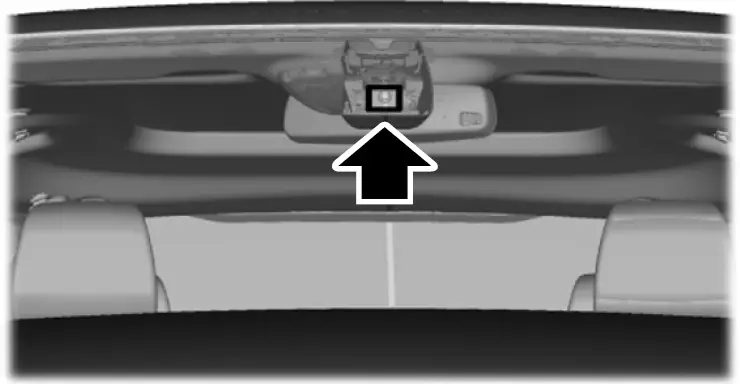
When you switch the lane keeping system on and the camera detects a drift out of the travel lane, the system alerts the driver by playing a chime.
Switching the System On and Off
Note: The system stores the on or off setting until you manually change it.
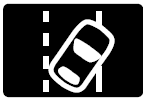 Press the button to switch the system on or off. The button is above the audio unit or on the center console.
Press the button to switch the system on or off. The button is above the audio unit or on the center console.
System Settings
Adjust the system sensitivity and intensity through the display screen. The system remembers the last selection. You do not need to readjust the setting each time you switch on your vehicle.
Sensitivity: This setting allows you to select where you would like to receive the alert within the lane. Increasing the sensitivity setting moves the warning zones in closer to your vehicle.
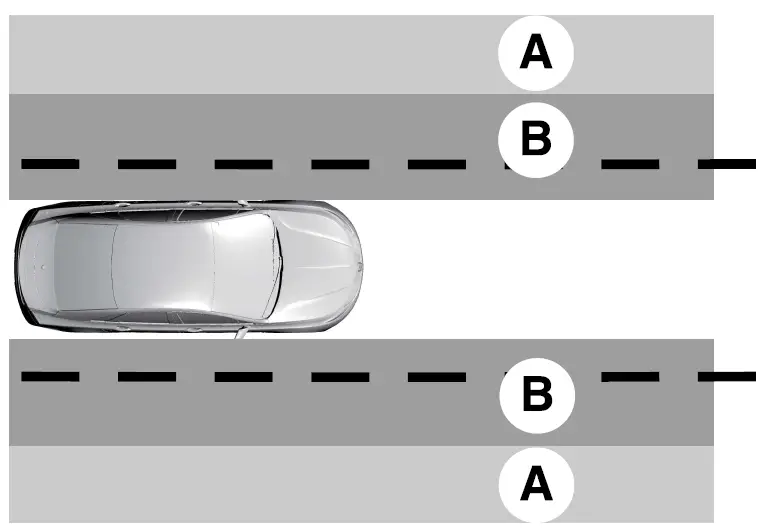
- Normal
- Increased
Note: The alert diagram illustrates general zone coverage. It does not provide exact zone parameters.
System Display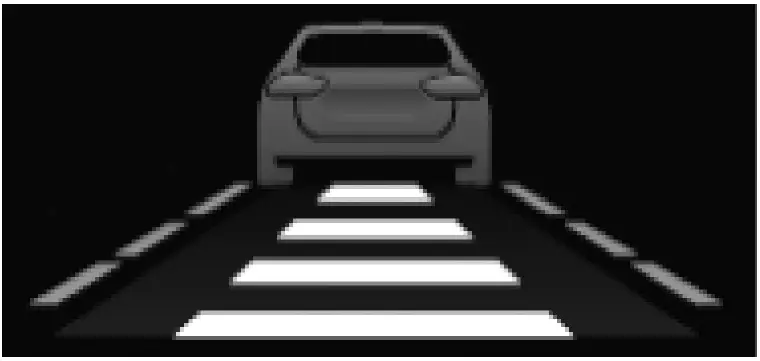
When you switch on the system, a graphic with lane markings appears in the display screen.
Note: The overhead vehicle graphic may still display if adaptive cruise control is enabled.
While the system is on, the color of the lane markings change to indicate the system status.
Gray: Indicates that the system is temporarily unable to provide a warning on the indicated side(s).
This may be because:
- Your vehicle is below the activation speed.
- The direction indicator is active.
- Your vehicle is in a dynamic maneuver.
- The road has no or poor lane markings in the camera field-of-view.
- Certain conditions can prevent the camera from detecting the lane markings. These conditions can include any of the following: environmental, traffic, vehicle conditions, significant sun angles, shadows, snow, heavy rain or fog, following a large vehicle that is blocking or shadowing the lane, or poor headlamp illumination.
See Troubleshooting for additional information.
Green: Indicates that the system is available or ready to provide a warning on the indicated side(s).
Red: Indicates that the system is providing or has just provided a lane keeping alert warning.
You can temporarily disable the system at any time by doing the following:
- Quick braking.
- Fast acceleration.
- Using your direction indicator.
- Evasive steering maneuver.
- Driving too close to the lane markings.
Troubleshooting
STEERING Hydraulic Power Steering
To help prevent damage to the power steering system:
- Do not hold the steering wheel at its furthest turning points for more than three to five seconds when the engine is running.
- Avoid continuously steering back and forth with elevated engine RPM as this may overheat the system. If trying to free a stuck vehicle, pause between attempts to allow the power steering system to cool or seek assistance. Typical steering and driving maneuvers allow the system to cool.
- Do not operate the vehicle if the power steering pump fluid level is below the MIN mark on the reservoir.
- Some noise is normal during operation.
If excessive, check for low power steering pump fluid level before seeking service by your dealer. - Heavy or uneven efforts may be caused by low power steering fluid. Check for low power steering pump fluid level before seeking service by your dealer.
- Do not fill the power steering pump reservoir above the MAX mark on the reservoir, as this may result in leaks from the reservoir.
If the power steering system breaks down or if you switch the engine off, you can steer the vehicle manually, but it takes more effort. If you have any steering components serviced or replaced, install new fasteners. Many fasteners have coatings with thread adhesive, or have prevailing torque features you cannot reuse. Do not reuse abolt or nut. Torque fasteners to specifications.
Steering Tips
If the steering wanders or pulls, check for:
- An improperly inflated tire.
• Uneven tire wear.
• Loose or worn suspension components.
• Loose or worn steering components.
• Improper vehicle alignment.
Note: A high crown in the road or high crosswinds may also make the steering seem to wander or pull.
PRE-COLLISION ASSIST – VEHICLES WITH: AIR BRAKES
WARNING: You are responsible for controlling your vehicle at all times. The system is designed to be an aid and does not relieve you of your responsibility to drive with due care and attention. Failure to follow this instruction could result in the loss of control of your vehicle, personal injury or death.
WARNING: The system does not detect vehicles that are driving in a different direction, pedestrians, cyclists or animals. Apply the brakes when necessary. Failure to follow this instruction could result in the loss of control of your vehicle, personal injury or death.
WARNING: The system is not designed to detect non-metallic objects and does not reliably detect some objects with limited metallic surfaces. For example, recreational vehicles, motorcycles and guard rails. Apply the brakes when necessary. Failure to follow this instruction could result in the loss of control of your vehicle, personal injury or death.
WARNING: The system does not operate during hard acceleration or steering. Failure to take care may lead to a crash or personal injury.
WARNING: The system may not operate properly during severe weather conditions, for example snow, ice, heavy rain and spray. Always drive with due care and attention. Failure to take care may result in a crash.
WARNING: Some situations and objects prevent hazard detection. For example low or direct sunlight, inclement weather, unconventional vehicle types, and pedestrians. Apply the brakes when necessary. Failure to follow this instruction could result in the loss of control of your vehicle, personal injury or death.
WARNING: The system cannot help prevent all crashes. Do not rely on this system to replace driver judgment and the need to maintain a safe distance and speed.
WARNING: Take additional care if your vehicle is heavily loaded or you are towing a trailer. These conditions could result in reduced performance of this system. Failure to follow this instruction could result in the loss of control of your vehicle, personal injury or death.
Using the Pre-Collision Assist System
If your vehicle is approaching a stationary vehicle in your lane of travel, the system provides an Alert. Stationary vehicle detection is active at speeds above approximately 10 mph (16 km/h).
If your vehicle is rapidly approaching another vehicle traveling in the same direction as yours, the system provides two levels of functionality:
- Alert.
- Active Braking.
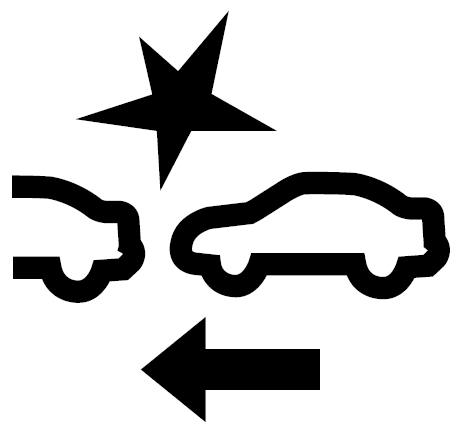
Alert: When active, a flashing visual warning appears and an audible warning tone sounds.
Active Braking: Active Braking is active at speeds above approximately 15 mph (24 km/h). Active braking may activate if the system determines that a collision is imminent. The system may help the driver reduce impact damage or avoid the crash completely.
Pre-Collision Assist Settings
Active braking turns on every time you switch the ignition on. You cannot adjust the Pre-Collision Assist settings.
Note: We recommend that you switch the system off if you install a snow plow or similar object in such a way that it may block the radar sensor. Your vehicle remembers the system status across key cycles.
Blocked Sensors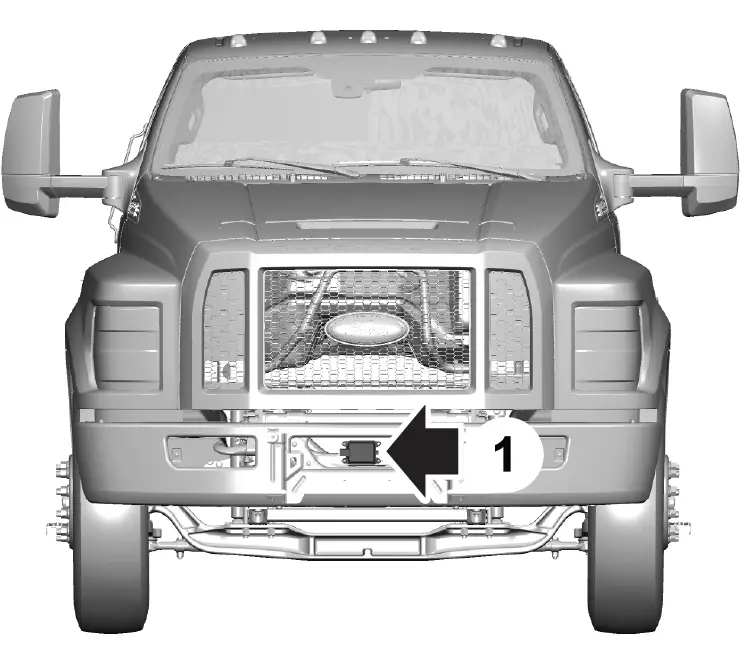
- Radar sensor.
The information display shows a blocked sensor message to indicate a sensor obstruction. The radar sensor is located behind the bumper and mounted to the frame below the center of the grille. If you install a snow plow or similar object, you may block the radar sensor. With a blocked sensor, the Pre-Collision Assist system may not function, or performance may reduce. The following table lists possible causes and actions for when this message displayed.
Radar Troubleshooting
|
Cause |
Action |
|
The surface of the radar in the grille is dirty or obstructed in some way. |
Clean the grille surface in front of the radar or remove the object causing the obstruc- tion. |
|
The surface of the radar in the grille is clean but the message remains in the display screen. |
Wait a short time. It may take several minutes for the radar to detect that there is no obstruction. |
|
Heavy rain, spray, snow or fog is interfering with the radar signals. |
The Pre-Collision Assist system is tempor- arily disabled. Pre-Collision Assist automat- ically reactivates a short time after the weather conditions improve. |
|
Swirling water or snow or ice on the surface of the road may interfere with the radar signals. |
The Pre-Collision Assist system is tempor- arily disabled. Pre-Collision Assist automat- ically reactivates a short time after the weather conditions improve. |
|
Radar is out of alignment due to a front end impact. |
Contact an authorized dealer to have the radar checked for proper coverage and operation. |
Note: If something hits the front end of your vehicle or damage occurs and your vehicle has a radar sensor, the radar sensing zone may change. This could cause missed or false vehicle detections. Contact an authorized dealer to have the radar checked for proper coverage and operation.
PRE-COLLISION ASSIST – VEHICLES WITH: HYDRAULIC BRAKES
WARNING: You are responsible for controlling your vehicle at all times. The system is designed to be an aid and does not relieve you of your responsibility to drive with due care and attention. Failure to follow this instruction could result in the loss of control of your vehicle, personal injury or death.
WARNING: The system does not detect vehicles that are driving in a different direction, pedestrians, cyclists or animals. Apply the brakes when necessary. Failure to follow this instruction could result in the loss of control of your vehicle, personal injury or death.
WARNING: The system does not operate during hard acceleration or steering. Failure to take care may lead to a crash or personal injury.
WARNING: The system may operate with reduced function during cold and inclement weather conditions. Snow, ice, rain, spray and fog can adversely affect the system. Keep the front camera and radar free of snow and ice. Failure to follow this instruction may result in the loss of control of your vehicle, serious personal injury or death.
WARNING: System performance could be reduced in situations where the vehicle camera has limited detection capability. These situations include but are not limited to direct or low sunlight, vehicles at night without tail lights, unconventional vehicle types, and pedestrians and cyclists with complex, partially obscured backgrounds. Failure to take care may result in the loss of control of your vehicle, personal injury or death.
WARNING: The system cannot help prevent all crashes. Do not rely on this system to replace driver judgment and the need to maintain a safe distance and speed.
WARNING: Take additional care if your vehicle is heavily loaded or you are towing a trailer. These conditions could result in reduced performance of this system. Failure to follow this instruction could result in the loss of control of your vehicle, personal injury or death.
Using the Pre-Collision Assist System
The pre-collision assist system is active at speeds above 3 mph (5 km/h).
If your vehicle is rapidly approaching another stationary vehicle or a vehicle traveling in the same direction, the system provides three levels of functionality:
- Alert.
- Brake support.
- Active braking.
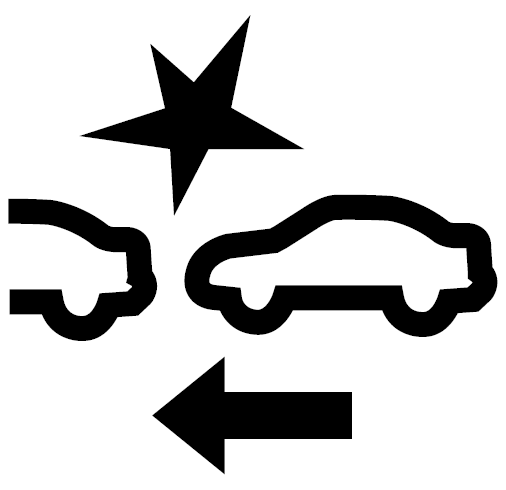
Alert: When active, a flashing visual warning appears and an audible warning tone sounds.
Brake support: Helps reduce the impact speed by preparing the brakes for rapid braking. The system does not automatically apply the brakes. If you press the brake pedal, the system could apply additional braking up to maximum braking force, even if you lightly press the brake pedal.
Active braking: May activate if the system determines that a collision is imminent. The system may help the driver reduce impact damage or completely avoid the crash.
Note: If you perceive pre-collision assist alerts as being too frequent, then you can reduce the alert sensitivity, though the manufacturer recommends using the highest sensitivity setting where possible. Setting lower sensitivity would lead to fewer and later system warnings.
Distance Indication and Alert
Provides the driver with a graphical indication of the time gap to other preceding vehicles traveling in the same direction. The distance indication and alert screen in the instrument cluster display shows one of the following graphics.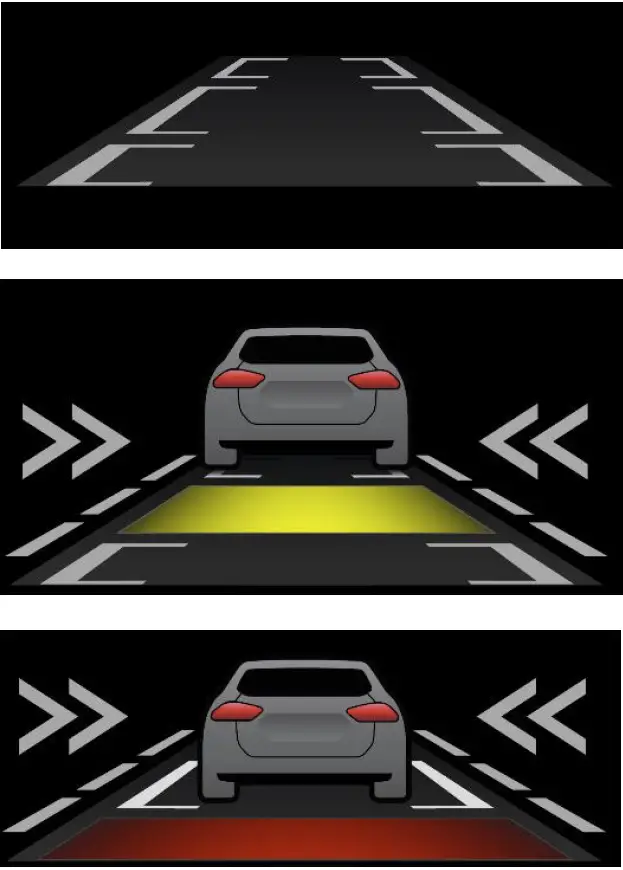
If the time gap to a preceding vehicle is small, a red visual indication displays.
Adjusting the Pre-Collision Assist Settings
You can adjust the following settings by using the instrument cluster display controls. See General Information (page 71).
- You can change alert and distancealert sensitivity to one of three possible settings.
- You can switch distance indication and alert on or off.
- If required, you can switch active braking on or off.
- If required, you can switch the entire pre-collision assist feature on or off.
Note: Active braking turns on every time you switch the ignition on.
Note: Switch the system off if you install a snowplow or similar object in such a way that it may block the radar sensor. Your vehicle remembers the selected setting across key cycles.
Blocked Sensors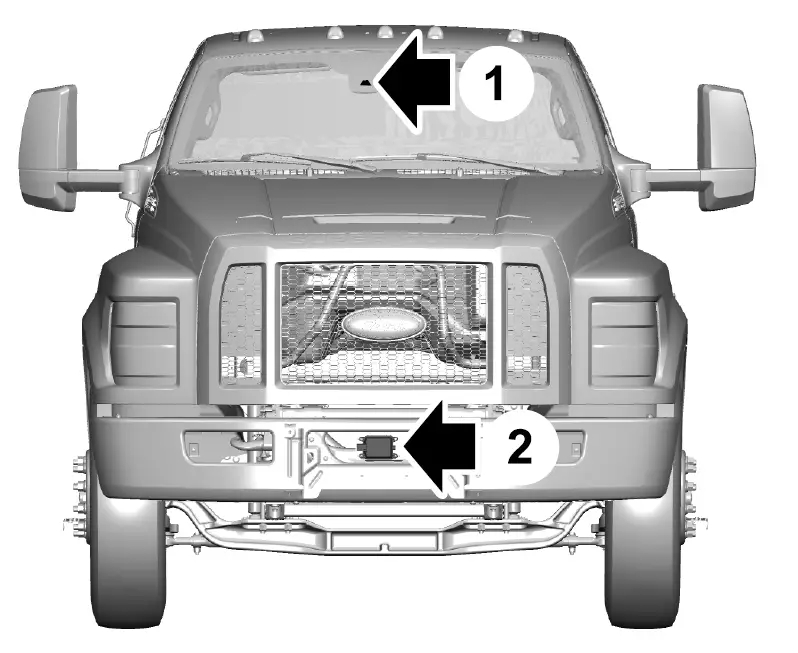
- Camera.
- Radar sensor.
If a message regarding a blocked sensor or camera appears in the instrument cluster display, the radar signals or camera images are obstructed. With a blocked sensor or camera, the pre-collision assist system may not function, or performance may reduce. The following table lists possible causes and actions for when this message displays.
Camera Troubleshooting
|
Cause |
Action |
|
The windshield in front of the camera is dirty or obstructed in some way. |
Clean the outside of the windshield in front of the camera. |
|
The windshield in front of the camera is clean but the message remains in the display screen. |
Wait a short time. It may take several minutes for the camera to detect that there is no obstruction. |
Radar Troubleshooting.
|
Cause |
Action |
|
The surface of the radar in the grille is dirty or obstructed in some way. |
Clean the grille surface in front of the radar or remove the object causing the obstruc- tion. |
|
The surface of the radar in the grille is clean but the message remains in the display screen. |
Wait a short time. It may take several minutes for the radar to detect that there is no obstruction. |
|
Heavy rain, road spray, snow or fog is inter- fering with the radar signals. |
The pre-collision assist system is tempor- arily disabled. Pre-collision assist automat- ically reactivates a short time after the weather conditions improve. |
|
Swirling water or snow or ice on the surface of the road may interfere with the radar signals. |
The pre-collision assist system is tempor- arily disabled. Pre-collision assist automat- ically reactivates a short time after the weather conditions improve. |
|
Radar is out of alignment due to a front end impact. |
Contact an authorized dealer to have the radar checked for proper coverage and operation. |
Note: Proper system operation requires the camera have an unobstructed view of the road. Repair any windshield damage in the area of the camera’s field of view.
Note: If something hits the front end of your vehicle or damage occurs and your vehicle has a radar sensor, the radar sensing zone may change. This could cause missed or false vehicle detections. Contact an authorized dealer to have the radar checked for proper coverage and operation.
Note: If your vehicle detects excessive heat at the camera or a potential misalignment condition, a message may display in the instrument cluster display indicating the sensor is temporarily unavailable. When operational conditions are correct, the message deactivates. For example, when the ambient temperature around the sensor decreases or the sensor successfully recalibrates.
FAQs
The 2025 Ford F-650 is equipped with various driving aids sensors, including but not limited to radar sensors, ultrasonic sensors, and cameras, which work together to enhance safety and assist the driver in various driving scenarios.
The adaptive cruise control system in the 2025 Ford F-650 utilizes radar sensors to maintain a safe following distance from the vehicle ahead, automatically adjusting the vehicle’s speed to match the traffic flow, providing convenience and reducing driver fatigue.
Yes, depending on the vehicle’s settings, the lane departure warning system in the 2025 Ford F-650 may be adjustable or temporarily disabled through the vehicle’s infotainment system or settings menu.
The blind spot monitoring system in the 2025 Ford F-650 utilizes radar sensors to detect vehicles in the driver’s blind spots, providing visual or audible alerts to warn the driver of potential collision risks during lane changes.
Yes, the 2025 Ford F-650 may be equipped with parking aids sensors such as ultrasonic sensors or cameras, which help drivers maneuver into parking spaces safely by providing proximity alerts and visual aids.
The forward collision warning system in the 2025 Ford F-650 utilizes sensors to detect vehicles or obstacles in the vehicle’s path, issuing warnings to the driver to help prevent or mitigate potential collisions.
The automatic emergency braking system in the 2025 Ford F-650 utilizes sensors to monitor the road ahead for potential collision risks, automatically applying the brakes if a collision is imminent to help reduce the severity of impact or avoid accidents altogether.
Depending on the vehicle’s settings, the adaptive headlights in the 2025 Ford F-650 may offer adjustable beam patterns or brightness levels to optimize visibility and illumination in various driving conditions.
The rear cross-traffic alert system in the 2025 Ford F-650 utilizes sensors to detect vehicles approaching from the sides while backing up, issuing alerts to warn the driver of potential collision risks, especially in crowded parking lots or tight spaces.
Yes, the 2025 Ford F-650 may be equipped with lane-keeping sensors and systems, which help drivers maintain their lane position by providing corrective steering inputs or alerts if the vehicle begins to drift out of its lane without signaling.
The traffic sign recognition system in the 2025 Ford F-650 utilizes cameras or sensors to detect and interpret traffic signs, displaying relevant information such as speed limits or warnings on the vehicle’s dashboard or heads-up display for the driver’s convenience and awareness.
The lane-keeping assist system in the 2025 Ford F-650 utilizes sensors to monitor the vehicle’s position within its lane, providing gentle steering inputs or alerts to help the driver maintain proper lane alignment and prevent unintentional lane departures.
Yes, the 2025 Ford F-650 may be equipped with sensors and systems to detect signs of driver drowsiness or fatigue, issuing alerts or prompts to encourage the driver to take breaks and stay alert behind the wheel.
The evasive steering assist system in the 2025 Ford F-650 utilizes sensors to detect potential collision risks and assist the driver in executing evasive maneuvers, providing additional steering inputs or to help avoid accidents or minimize their impact.
Yes, the adaptive cruise control system in the 2025 Ford F-650 may offer adjustable settings or modes to accommodate different driving conditions such as highway driving, heavy traffic, or inclement weather, providing enhanced flexibility and convenience for the driver.
Useful Links
2024 Ford Maverick Specs, Price, Features, Mileage and Review

